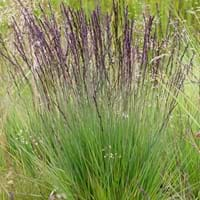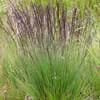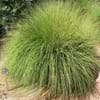Life Span
Perennial
Perennial
Type
Grass
Flowering Plants, Fruits, Trees
Origin
Asia, Europe, North Africa
Central America, Europe, North America
Types
purple moor-grass 'Moorhexe', variegated purple moor-grass
Not Available
Habitat
Boggy areas, Dry and Young forest Heaths, Lowland
Hedge, Scrubs, Woods
USDA Hardiness Zone
4-8
4-8
AHS Heat Zone
9 - 1
Not Available
Sunset Zone
1a, 1b, 2a, 2b, 3a, 3b, 4, 5, 6, 7, 8, 9, 14, 15, 16, 17
Not Available
Habit
Clump-Forming
Not Available
Flower Color
Dark Purple
White
Flower Color Modifier
Bicolor
Not Available
Fruit Color
Non Fruiting Plant
Yellow
Leaf Color in Spring
Green, Dark Green
Dark Green
Leaf Color in Summer
Light Green
Green
Leaf Color in Fall
Green, Yellow green, Gold
Brown, Green, Light Yellow
Leaf Color in Winter
Tan
Not Available
Leaf Shape
Needle like
Oblong
Plant Season
Spring, Summer, Fall, Winter
Summer
Sunlight
Full Sun, Partial Sun
Full Sun, Partial shade
Growth Rate
Medium
Medium
Type of Soil
Clay, Loam, Sand
Loamy
The pH of Soil
Acidic, Neutral
Neutral
Soil Drainage
Average
Well drained
Bloom Time
Late Spring, Summer, Late Summer, Early Fall, Fall
Fall, Summer
Tolerances
Not Available
Drought
Where to Plant?
Ground, Pot
Ground
How to Plant?
Divison, Transplanting, Vegetative Reproduction
Grafting, Seedlings, Transplanting
Plant Maintenance
Low
Medium
Watering Requirements
Requires regular watering, Water more frequently during periods of extreme drought
Medium
In Summer
Lots of watering
Lots of watering
In Spring
Moderate
Moderate
In Winter
Average Water
Average Water
Soil pH
Acidic, Neutral
Neutral
Soil Type
Clay, Loam, Sand
Loamy
Soil Drainage Capacity
Average
Well drained
Sun Exposure
Full Sun, Partial Sun
Full Sun, Partial shade
Pruning
Prune in winter, Remove damaged leaves, Remove dead branches, Remove dead leaves
Prune when plant is dormant, Remove dead or diseased plant parts
Fertilizers
No need to fertilize every year
All-Purpose Liquid Fertilizer
Pests and Diseases
Pests and diseases free
Aphids, Curculio occidentis, Japanese Beetles, Leaf Rollers, Leafminer, Mites, Red blotch, sawflies, Scale, Stink bugs
Plant Tolerance
Not Available
Drought
Flower Petal Number
Single
Single
Foliage Texture
Fine
Medium
Foliage Sheen
Matte
Matte
Attracts
Not Available
Not Available
Allergy
Not Available
Digestive Problems, Respiratory problems
Aesthetic Uses
Showy Purposes, Water gardening
Showy Purposes
Beauty Benefits
Not Available
Beautiful Skin
Environmental Uses
No fertilizer, pesticides, or herbicides needed
Food for birds
Medicinal Uses
No Medicinal Use
Anthelmintic, Antibacterial, Astringent, Hypnotic, Laxative, Refrigerant
Part of Plant Used
Whole plant
Fruits
Other Uses
Used as Ornamental plant
Edible syrup, Jam, Jelly, Used As Food
Used As Indoor Plant
No
No
Used As Outdoor Plant
Yes
Yes
Garden Design
Container, Foundation, Mixed Border
Not Available
Botanical Name
Molinia caerulea
Malus sylvestris
Common Name
purple moor-grass
European crab apple
In Hindi
बैंगनी दलदल घास
european crab apple
In German
Pfeifengras
Der Holzapfel, Europäischer Wildapfel
In French
pourpre lande-grass
Le Boquettier, le Pommier sauvage ou Pommier des bois
In Spanish
púrpura amarra-hierba
Malus sylvestris, el Manzano silvestre, manzano silvestre europeo
In Greek
μωβ Moor-γρασίδι
Ευρωπαϊκή μήλο καβουριών
In Portuguese
purple moor-grass
Malus sylvestris
In Polish
fioletowy Moor-trawa
Jabłoń dzika
In Latin
Maurus herba-purpura,
european crab apple
Phylum
Magnoliophyta
Magnoliophyta
Class
Liliopsida
Magnoliopsida
Clade
Angiosperms, Commelinids, Monocots
Angiosperms, Eudicots, Rosids
Tribe
Not Available
Not Available
Subfamily
Not Available
Not Available
Number of Species
Not Available
Not Available
Importance of Molinia Caerulea and European Crab Apple
Want to have the most appropriate plant for your garden? You might want to know the importance of Molinia Caerulea and European Crab Apple. Basically, these two plants vary in many aspects. Compare Molinia Caerulea and European Crab Apple as they differ in many characteristics such as their life, care, benefits, facts, etc. Every gardener must at least have the slightest clue about the plants he wants to plant in his garden. Compare their benefits, which differ in many ways like facts and uses. The medicinal use of Molinia Caerulea is No Medicinal Use whereas of European Crab Apple is Anthelmintic, Antibacterial, Astringent, Hypnotic, Laxative and Refrigerant. Molinia Caerulea has beauty benefits as follows: Not Available while European Crab Apple has beauty benefits as follows: Not Available.
Compare Facts of Molinia Caerulea vs European Crab Apple
How to choose the best garden plant for your garden depending upon its facts? Here garden plant comparison will help you to solve this query. Compare the facts of Molinia Caerulea vs European Crab Apple and know which one to choose. As garden plants have benefits and other uses, allergy is also a major drawback of plants for some people. Allergic reactions of Molinia Caerulea are Not Available whereas of European Crab Apple have Digestive Problems and Respiratory problems respectively. Having a fruit bearing plant in your garden can be a plus point of your garden. Molinia Caerulea has showy fruits and European Crab Apple has showy fruits. Also Molinia Caerulea is not flowering and European Crab Apple is flowering. You can compare Molinia Caerulea and European Crab Apple facts and facts of other plants too.





